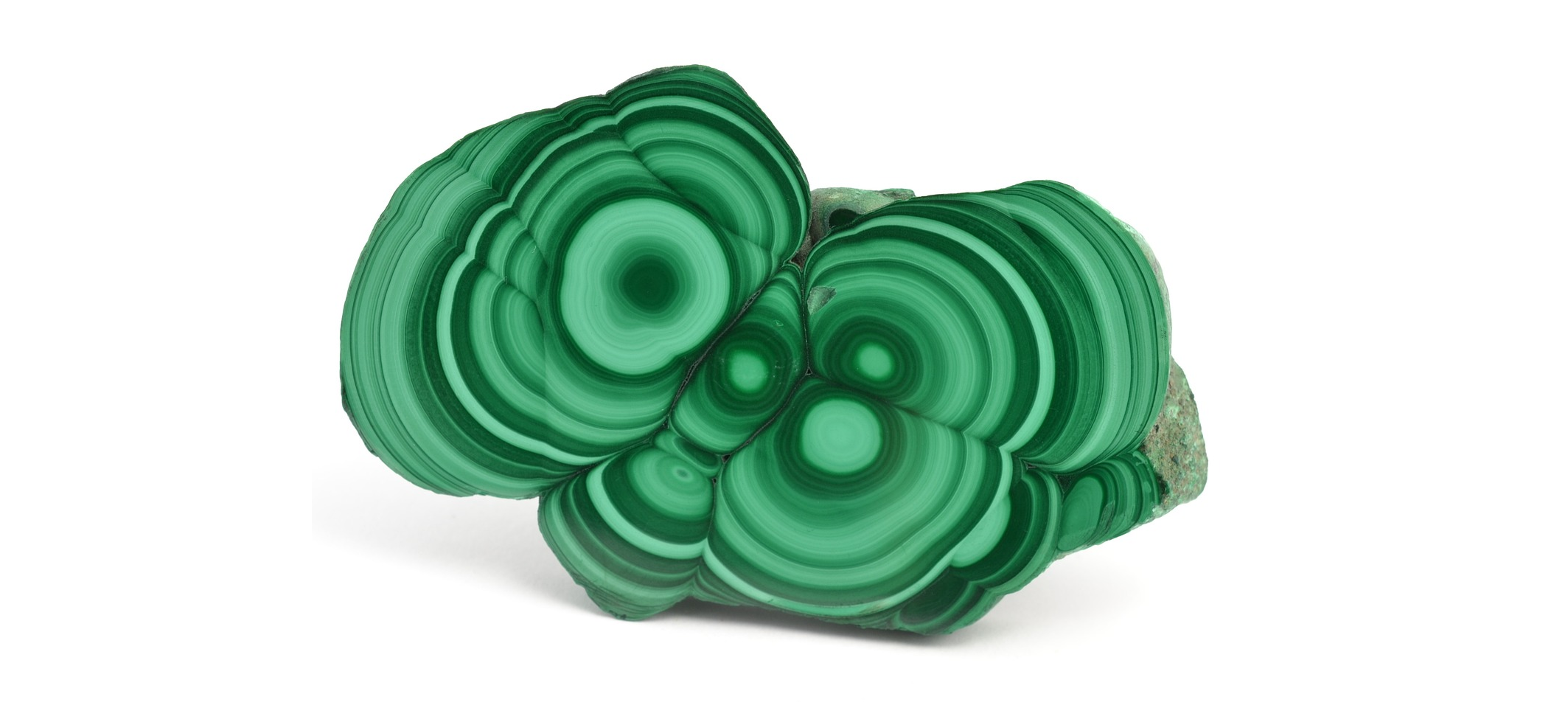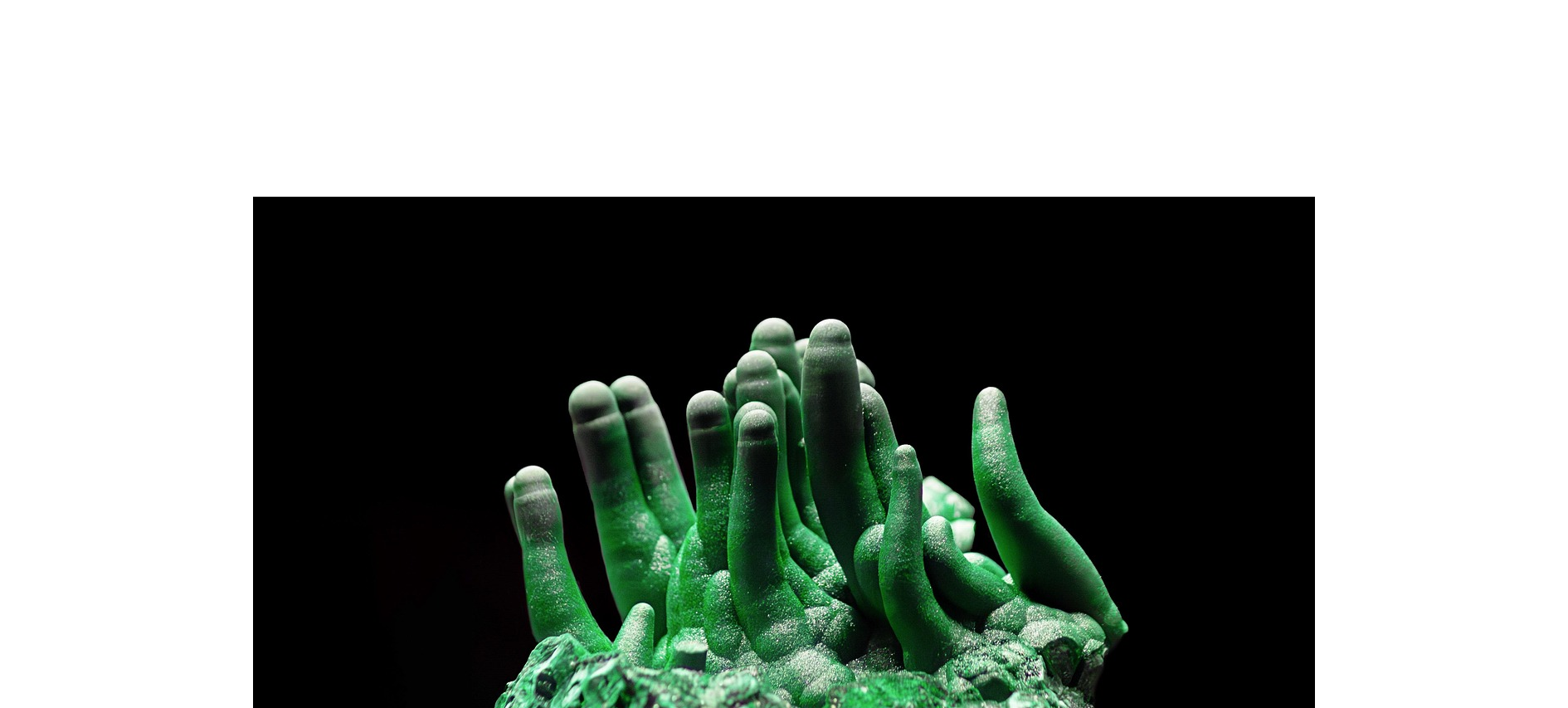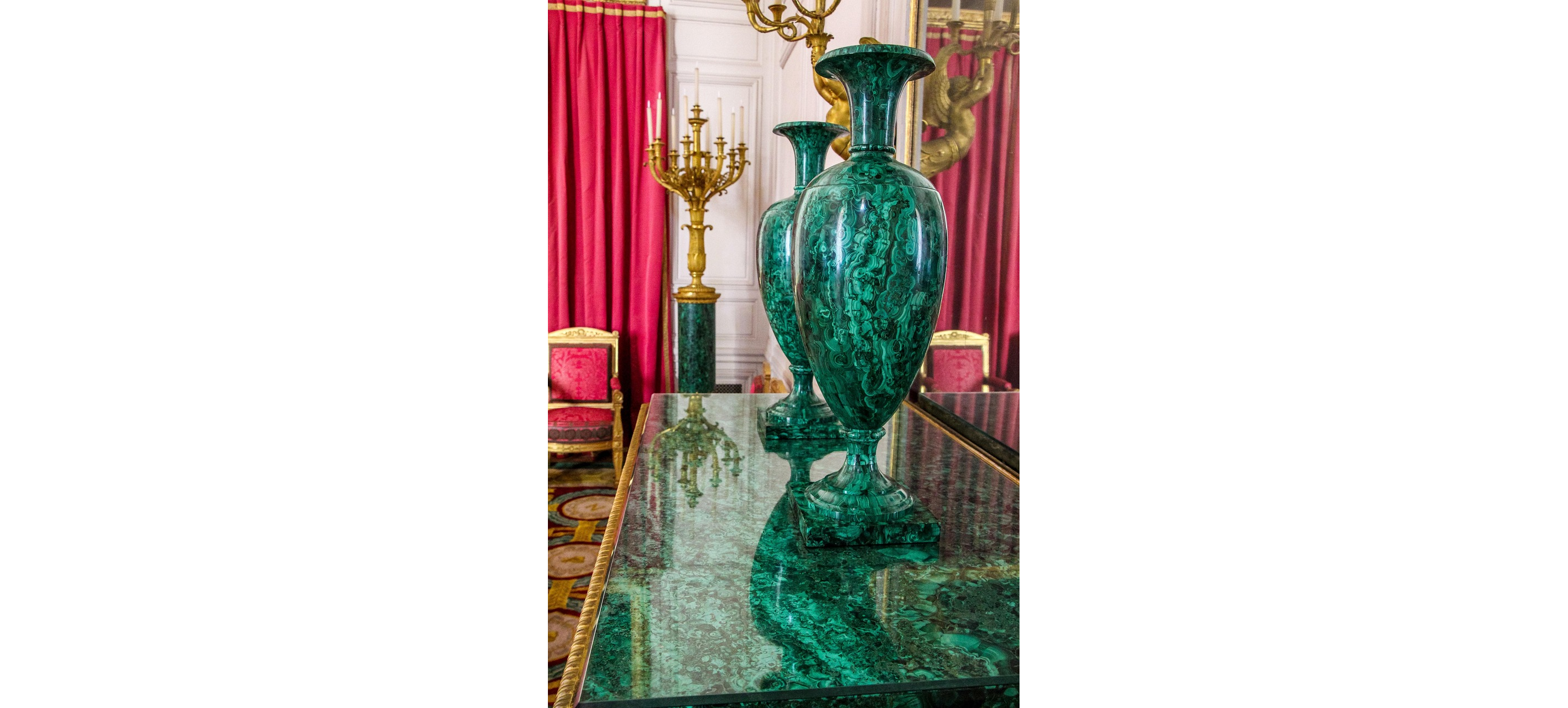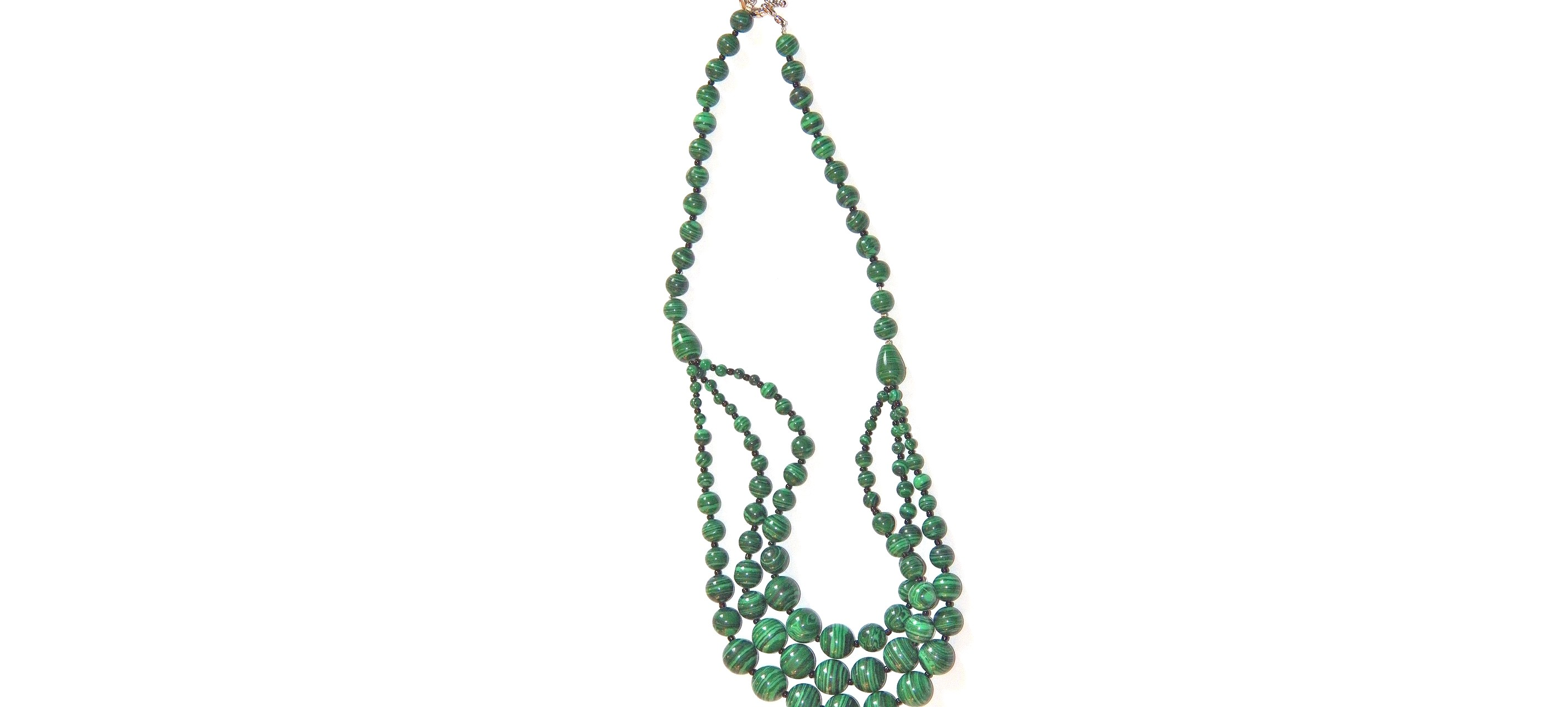M




MALACHITE
Name: Derived from the Greek word "malhe," meaning grass, "malakos" meaning "soft," or from "molochitis lithios" meaning mallow-green stone.
Description: an opaque gem with a strong bluish green to green color. It typically shows curved or circular banding in varying shades of green. It is considered an extra-care gem.
Color: It gets its color from copper. Its color ranges from bluish green to dark green color. Usually features distinctive curved or angular banding (concentric circles, swirls) with differing shades of green (alternating lighter and darker shades) in agate-like patterns. It is sometimes called “peacock eyes”.
Treatments:
Wax: fill small surface voids, improve luster, and enhance durability.
Impregnation: sometimes with plastic or other hardening agents to increase durability.
Moh’s Hardness: 3.5 to 4.
Toughness: poor.
Location Found: Australia; Chile; Democratic Republic of Congo (Zaire); Germany; Mexico; Romania; Russia (Ural Mountains); South Africa; United Kingdom; United States (Arizona, New Mexico); Zambia.
Birthstone: March to May.
Wedding Anniversaries: N/A.
Zodiac Signs: Cancer, Capricorn, Libra, Pisces, Sagittarius, Scorpio, Taurus, Virgo.
Chakra Associations: Heart, Throat, Solar Plexus.
Historical Associations: peaceful sleep; protection from witchcraft; absorb/ward off the evil eye; transformation; protection; truth unveiled; intense transmutation; hidden wounds exposed; hidden toxic cords exposed; unspoken grief exposed; deep energetic protection; guardian stone; protection women and children from spiritual attack; self-expression; self-confidence; balance; abundance; good luck; bring peace; protect infants.
Historically Used to Treat: liver; heart; womb; menstrual health; emotional pain stored in the body; emotional healing; pollutants; electromagnetic radiation; illness; childbirth; colic; stomach ailments; fainting spells; muscle spasms; cardiac pains.
Care: High heat can cause discoloration and damage. Excessive sunlight may cause color to fade or the stone to turn black. It will react and dissolve in acids (even mild ones like vinegar). Sensitive to ammonia and bleach. Avoid wearing while cleaning or cooking with acids. Avoid steam or ultrasonic cleaning. A soft damp cloth and mild soap is safe. Dry thoroughly.
Imitations: Glass; Plastic. These can often be identified by a lighter weight, lack of natural banding, or an unnatural appearance.
Synthetics: Produced on a limited basis. Identification requires advanced testing. Poorly made synthetics can have an unnatural color. Can also be identified by banding and eye patterns that lack a natural, geometric growth.
Description: an opaque gem with a strong bluish green to green color. It typically shows curved or circular banding in varying shades of green. It is considered an extra-care gem.
Color: It gets its color from copper. Its color ranges from bluish green to dark green color. Usually features distinctive curved or angular banding (concentric circles, swirls) with differing shades of green (alternating lighter and darker shades) in agate-like patterns. It is sometimes called “peacock eyes”.
Treatments:
Wax: fill small surface voids, improve luster, and enhance durability.
Impregnation: sometimes with plastic or other hardening agents to increase durability.
Moh’s Hardness: 3.5 to 4.
Toughness: poor.
Location Found: Australia; Chile; Democratic Republic of Congo (Zaire); Germany; Mexico; Romania; Russia (Ural Mountains); South Africa; United Kingdom; United States (Arizona, New Mexico); Zambia.
Birthstone: March to May.
Wedding Anniversaries: N/A.
Zodiac Signs: Cancer, Capricorn, Libra, Pisces, Sagittarius, Scorpio, Taurus, Virgo.
Chakra Associations: Heart, Throat, Solar Plexus.
Historical Associations: peaceful sleep; protection from witchcraft; absorb/ward off the evil eye; transformation; protection; truth unveiled; intense transmutation; hidden wounds exposed; hidden toxic cords exposed; unspoken grief exposed; deep energetic protection; guardian stone; protection women and children from spiritual attack; self-expression; self-confidence; balance; abundance; good luck; bring peace; protect infants.
Historically Used to Treat: liver; heart; womb; menstrual health; emotional pain stored in the body; emotional healing; pollutants; electromagnetic radiation; illness; childbirth; colic; stomach ailments; fainting spells; muscle spasms; cardiac pains.
Care: High heat can cause discoloration and damage. Excessive sunlight may cause color to fade or the stone to turn black. It will react and dissolve in acids (even mild ones like vinegar). Sensitive to ammonia and bleach. Avoid wearing while cleaning or cooking with acids. Avoid steam or ultrasonic cleaning. A soft damp cloth and mild soap is safe. Dry thoroughly.
Imitations: Glass; Plastic. These can often be identified by a lighter weight, lack of natural banding, or an unnatural appearance.
Synthetics: Produced on a limited basis. Identification requires advanced testing. Poorly made synthetics can have an unnatural color. Can also be identified by banding and eye patterns that lack a natural, geometric growth.
